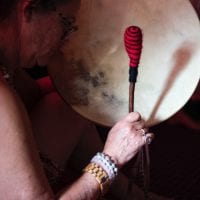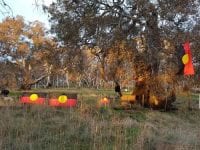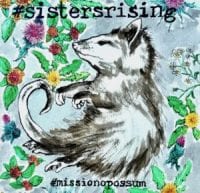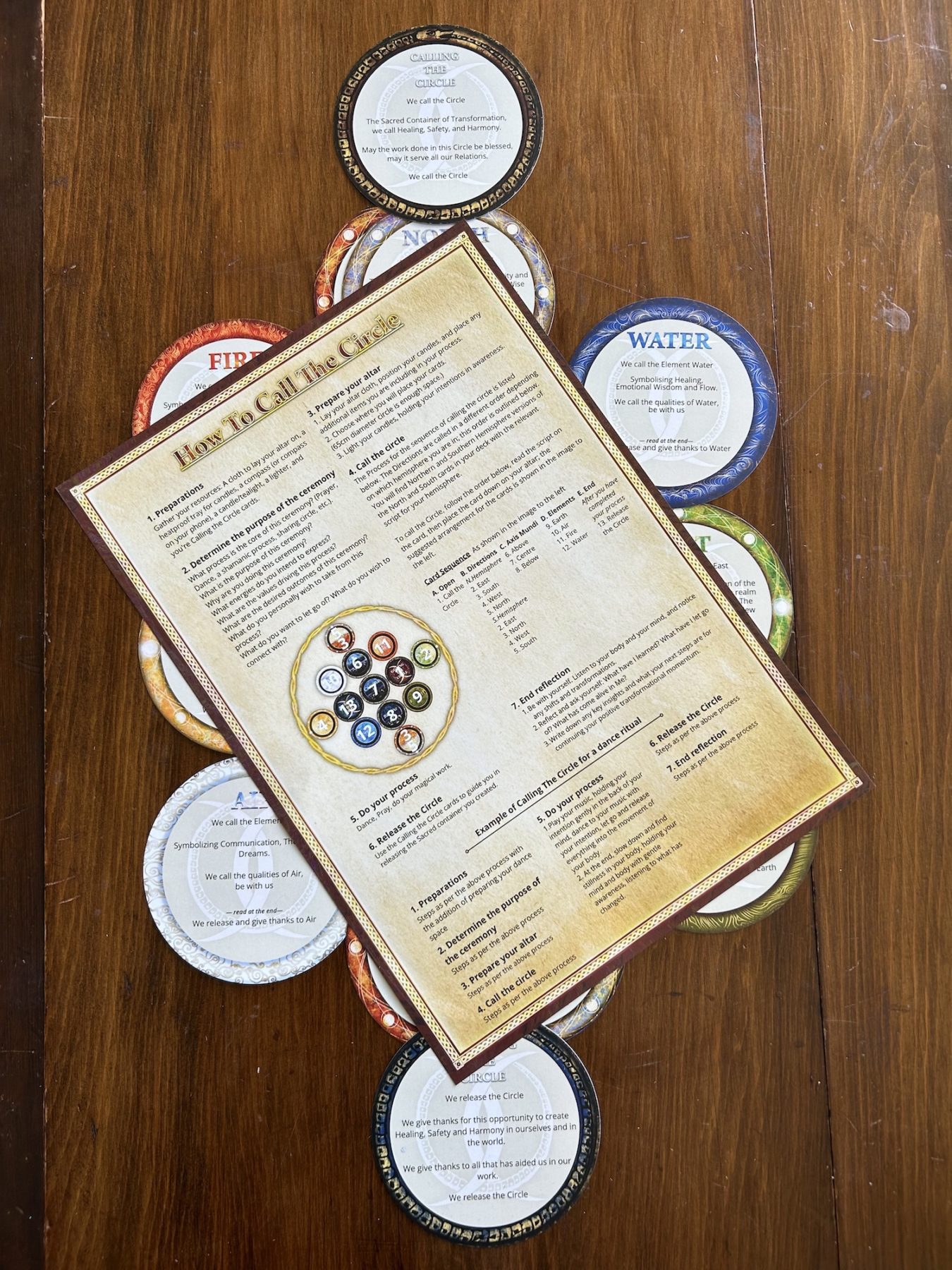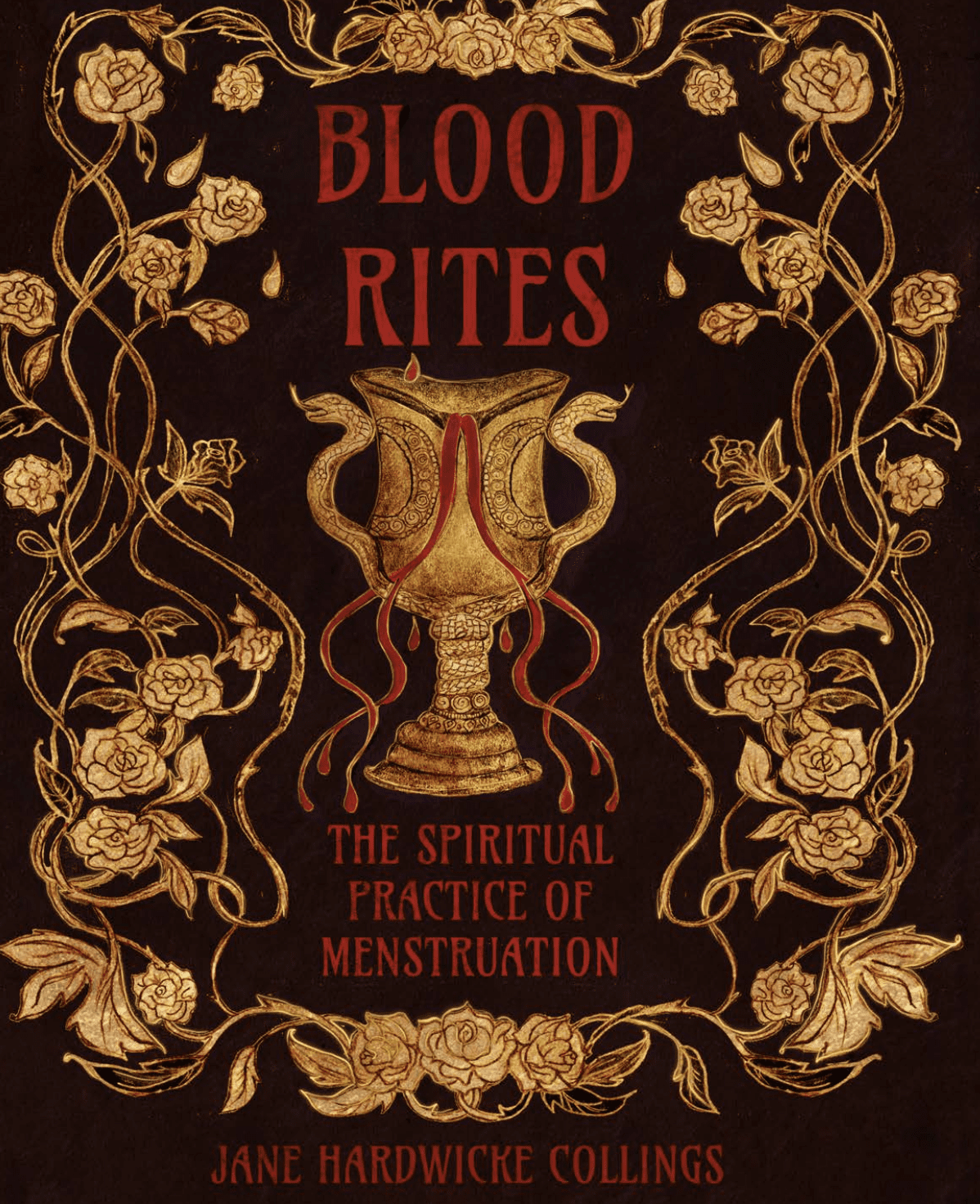ADDRESSING WOMEN & DEPRESSION BY HONOURING RITES OF PASSAGE
Presentation at the “Women and Depression Conference” Sydney 2007
Spring 2013
Our modern culture has forgotten to honour the Rites of Passage in a Woman’s life. In not doing this we miss the opportunity they provide of celebrating and welcoming the huge transformations that we go through at our menarche, childbirth and menopause. Honouring rites of passage is an ancient tradition seen in all cultures across the planet. Our rites of passage happen whether we bring consciousness to them or not.
And the experience we have at each of these times of transformation in our life is what teaches us about what our culture expects of us in our new role and how that role is valued, whether we realise it or not. The incidence of depression for women increases in adolescence, once menstruation starts, after childbirth and around and after menopause. It is known that these events bring fluctuations in mood that for some women include depression. To imagine that this in unrelated to what happens at these events, is to my mind, miss- ing the obvious.
At her menarche, the experience a girl has, how she is treated, the messages she gets, both subliminal and specific, inform her of her culture’s value of woman and how she is expected to behave. What happens during the rite of passage of childbirth, sets a theme for the woman’s mothering, tells her how her culture values the mother and implies how she should mother.
The blueprint, Nature’s plan, for the experience of childbirth, is for the woman to find her inner strength and inner knowing for her to draw on as Mother. Each time a woman gives birth it is another rite of pas- sage, deeper into motherhood.
Then what happens around Menopause, the rite of passage which heralds the post-fertile years of a woman’s life, will inform her how her culture values the wise woman and this will effect how she feels about her ageing and tell her how she is culturally expected to live out her life.
How much depression is a result of the explicit and implicit messages given to women during these transitions?
How much depression is a result of our culture’s reinforced unrealistic expectation that we should be happy all the time?
How much depression is a result of not honouring our life cycle, of wanting to be something or somewhere other than who and where we actually are?
How much depression is a result of not honouring the natural cyclical ebb and flow of our energy and our moods that comes with our monthly ovulation and menstrual cycle
And the menarche, menstruation, childbirth and menopause may also bring to the surface for healing any memories of sexual or physical abuse that may have occurred that in turn may result in depressive symptoms.
The Pill, one of the most prescribed medications, can cause depression. As can certain dietary habits and life styles. The incidence of depression has increased at the same time as the nutrient value in our food has decreased. So there are many influences, situations and circumstances in our modern lives that can result in the symptoms of depression.
And, much we can do about it.
I suggest we notice what is, instead of pretending what is not, and honour the rites of passage instead of forget them.
The Waxing & Waning of Women
Everything about a woman’s life is cyclical, there is a never ending spiral of growth and decay, building up and letting go, energy out and energy in. It happens every month with the menstrual cycle and every 29.5 days with the lunation cycle, every three months with a change of season and every 25 or so years of one’s life. Same cycle, different speeds.
And if you’re lucky or more correctly in tune, then your monthly cycle and the moon’s, will be synchronised, Just as nature intended. Menstruation gives us our cycle, a monthly clock to live our life around, it gives us times of energy out and times of energy in, just like the moon waxes and wanes each month, our energy, creativity and libido waxes and wanes, yet how many women live according to their cycle?
Mostly we ignore, or at least try to ignore that we don’t feel able or up to the various tasks we set ourselves when our energy is waning in the second half of our cycle. To say “I am premenstrual” is seen by many as some sort of lame excuse for inadequacy.
Our culture is not geared around the natural waxing and waning of women. We could be lead to believe that we need to be like the women in the tampon ads, plug ourselves up, wear tight white clothes and carry on regardless of the fact that we are bleeding.
We are encouraged to ignore the messages from our body, take mersyndol, panadol, whatever and pretend its business as usual.
If you think this works, just ask the men folk around you.
Healing The Imbalance
Childbirth, the rite of passage into Motherhood, is today, for many women, surgical, terrifying and traumatic and may result in post traumatic stress disorder that maybe misdiagnosed as postnatal depression. The isolation women feel in mothering in the modern nuclear family is one of the main factors that cause depressive symptoms.
“Throughout most of human history we have raised our children in community and in close contact with other adults. Postnatal depression was not evident before industrialisation, but is now present in every industrialised nation.” According to anthropologist Robbie Davis Floyd, we are not genetically adapted to the nuclear family, which is a byproduct of industrialisation.
And the stress that working mothers experience adds to the problem.
Following menopause, the next rite of passage, the women most likely to experience depression are those who have at earlier times in their lives. According to Dr Christiane Northrup, the severity of the symptoms experienced at perimenopause is directly related to the amount of times a woman has ignored the symptoms she has experienced during the other times in her life cycle, premenstrually and post natally.
Symptoms that are her inner self calling out through the body for attention, for healing, for a change in ways to better suit health, mental and physical health. That’s the key, physical and emotional symptoms are messages from our body, our selves, too indicate imbalance, disharmony and a need for healing.
For many women, depressive symptoms will be just that. An indicator of imbalance.
And this imbalance may be in the beliefs and attitudes they hold about being a woman, and a way to help heal that is in honouring the rites of passage and cycles of a woman.
The Season’s of A Woman’s Life
So let’s look at these rites of passage and where they fit in, in our lives, how we can honour them and the effects of that. When viewed as a whole, a Woman’s life is divided into 4 seasons – Maiden, Mother, Maga and Crone.
These seasons match the Earth’s seasons and are related to and defined by, the expression of a woman’s fertility.
Maiden, the Spring season – the time from birth to childbirth Mother, the Summer season – from childbirth to menopause Maga, the Autumn season – from menopause to retirement Crone, the Winter season – from retirement to death
At the beginning of each life season there is a rite of passage, this marks the end of one season and the beginning of the next. These also match the ancient sabbats, the equinoxes and solstices that mark the shift from one Earth season to another.
During the Spring season of the Maiden there are two rites of passage. Her own birth, which begins and sets the theme for her life and the Menarche, the initiation of menstruation, that transforms the Girl to a Woman. Then her fertility and sexuality become the rhythm of her life.
Childbirth is the rite of passage that heralds the entry to the next life season – Mother, the Summer of a Woman’s life. Each time a woman gives birth is another rite of passage as she deepens her experience as Mother.
Menopause, the cessation of menstruation or “change of life” marks the beginning of the Autumn season of Maga.
Retirement or withdrawal from the busy-ness of life marks the beginning of the season of the Crone, the Winter of a woman’s life.
Rites of passage or initiations, as they may also be referred to, serve to prepare and send the ‘initiate’ into
their new phase or role. Following the rite of passage and in the new role, the initiate is transformed, never to return to the way of life lead before.
Honouring The Rites of Passage
Our rites of passage of birth, menarche, childbirth and menopause serve the purpose of educating us of the value our culture places on us in our new role and of our culture’s expectations of us in the new role, they give us information about how we are supposed to behave and create the mindsets and beliefs to support that. There are many other rites of passage in our lives, starting school, birthdays, barmitzvas, graduations, weddings, to name a few.
In the process of what happens around the event, how one is treated, what one is taught, consciously and unconsciously, introduces, instructs, and even brainwashes us with the values and beliefs our culture holds about our expected behaviour in our new role. Much of the teaching happens subconsciously and symbolically.
Think of a traditional wedding, and think of the symbolic meaning behind the various parts of the rite. The bride is veiled, she wears white, she is lead to the altar by her father who ‘gives her away’ to another man, to whom she becomes legally bound. A ring is placed and meant to stay on her finger and her name is changed. The rite of passage of a wedding teaches the woman her role as wife. The symbols of control and ownership are there for all to see, and they have their effects. She may not choose to live by them or maybe she may not have that choice.
In many traditional cultures, the rites of passage around a woman’s fertility were enacted with the serious- ness and reverence they deserve. The cultures that honoured the feminine rites of passage of the menarche, childbirth and menopause were those that honoured the feminine in all respects. They were more likely peaceful cultures where woman and men were equally valued and they lived in harmony with the Earth and the cycles.
Menarche & Womanhood
Let’s look at the Menarche. The Apache Native Americans held ceremonies for days, with the whole tribe present, to celebrate girls entering their Womanhood. The Nootka tribe, had a party to honour a girl’s menarche, and then she was taken far out to sea and left to swim back to the land. Once she had done this she was recognised by her community as a woman, strong and brave and ready for the responsibilities of womanhood – marriage and rearing children.
In modern times, some families acknowledge the menarche with a gift for the young woman, a celebratory dinner, even a party. Sometimes this happens within a circle of women who welcome the newly fertile woman, the initiate, to their sisterhood. They share stories of their own experiences of menstruation and make wishes and blessings for the new woman’s future life.
And for others the menarche is not acknowledged.
The way the menarche and menstruation are dealt with in our culture, our families and our communities, influences how a young woman understands what it “means” to be a Woman, a cyclical sexual fertile fe- male human being. Few of us were treated with celebration and honouring to welcome us to our next phase
– Woman. So few of us know what to do with our daughters.
We need to welcome our daughters to womanhood and teach them that they are special and valued. We need to tell them it’s important that they honour their cycles. To go with the flow, as it were.
However first we must do that ourselves, and heal from any wounds from our own menarche rite of pas- sage.
In our community we welcome the girls to womanhood with a beautiful ceremony to honour them. We sit in a circle and the maiden sits in the centre. We all wear red and she wears a circlet of flowers on her head. Her Mother is there. Each woman around the circle shares with the maiden:
“ What I wish I had been told at the onset of my fertility cycle, or what I was told that really helped me…” “ What I have learned through and from my cycles over the years…”
And a special specific wish for the maiden from them. We give her gifts and have a tea party. The girls feel like they have been initiated into a special club.
They have – womanhood.
Menarche Experiences
I love some of the young women’s comments after their Menarche ceremony: Charissa: Thank you!
Chelsea: I didn’t want to do this you know, but it was cool, the best day of my life!
Katelyn: I feel special, like I’ve won something, you’re all being so nice to me!
And Tess and Millie, 10 and 9 year olds who where at the ceremony with their mothers, said they were going to watch the moon together, so their blood would come at the same time and they could have their ceremony together.
We have a circle once a month, with these girls and others who have started menstruating, who have also had menarche ceremonies.
It’s a beautiful thing, we each talk about where we are in our cycle and how we are experiencing it. We talk about the opportunities that our cycle gives each week, very like the seasons of the Earth. They certainly feel a connection with each other and with the cycles of the Earth and moon.
How Will This Effect Them As Women?
My guess would be that it will build on where they are at now, feeling aware, conscious and in tune with their cycles. Comfortable talking about it all and understanding why the feel the way they do on certain days.
They say they feel very glad that we gather and do talk about this kind of stuff, they say most of the other girls at school don’t and to them that seems immature.
Why wouldn’t we do everything we can to help our girls as they embark on their journey into womanhood, we may even heal ourselves in the process.
Pregnancy & Childbirth
Pregnancy and childbirth are the next rite of passage in a Woman’s life, the initiation into Motherhood. The way this rite of passage of birth is managed dictates to a woman her role and value as a Mother in her culture. And a culture’s attitude to Mothers and the value placed on specific qualities of Mothers are reflected in their attitudes and practices around birth.
(eg. clock and technology over a woman’s own time and intuition)
Fortunately, giving birth is what we as women are designed to do. Birth is a normal natural bodily function in fact it is our primary biological purpose and our bodies are designed and equipped to perform this function. Like all normal bodily functions, it relies on good health, right attitude and a healthy safe environment, to occur without mishap or complication.
However, one could be led to believe that birth is dangerous and that women who try to handle the pain without drugs are fooling themselves. One could be led to believe that the safest place to give birth is in a hospital with all the machines, the technology, the specialist doctors. One could be led to believe a lot of untruths.
And if one believes all that then they have encountered the brain washing effects of a rite of passage and the reason why and how the system perpetuates.
Birth technology has its place, its blessed place with the 15% of women who may actually require it.
85% of women are capable of giving birth without medical intervention, this however is not reflected in the birth statistics.
This is because our culture’s beliefs around birth, are reinforced by the interventionist practises. Unnecessary obstetric procedures such as many inductions, augmentations and elective caesareans cause higher rates of morbidity (damage) and mortality than normal vaginal birth.
And women don’t get the chance to see just how strong they are, how amazing they are, that they can give birth, that they can perform a miracle. Mostly what the modern attitudes and practises that happen around birth teach women, consciously and subconsciously, is that their bodies can’t be trusted. They don’t go into labour on time, don’t dilate fast enough, can’t push hard enough etc. How depressing! “I cant even give birth, well bugger it, give me all you’ve got, I won’t even bother trying.”
Women have been led to believe that caesarean section is a safe option for birth. And now in the media as the reality of the rising rate of caesarean sections has come under scrutiny, the women are being blamed. This is like the tobacco companies blaming people who smoke for smoking when they have been the one’s providing and advertising the tobacco the whole time.
The effects on women who do get to experience natural birth as their rite of passage into motherhood are what Mother Nature intended for us. They say, “after doing that, I feel like I can do anything!” And that’s perfect, because that’s the job description for a Mother! Be able to do anything!
Birth is a process that can be trusted, and trusted it must be, so that women can then trust themselves as mothers.
The increase in postnatal depression at the same time as the increase in caesareans and inductions and epidurals cannot be ignored.
Animals who are numbed at birth reject their babies. Animals who have their babies taken away from them at birth, who aren’t permitted to lick them, will not care for them when they are returned to them.
As one mum said: “For my first two births, inductions with epidurals and forceps deliveries, I never ques- tioned anything, I gave away my power. The birth was controlled, I just lay there and they did everything, they even took control of the baby. In my mothering I was always needing someone else to fix things, or tell me what to do. I was always reaching out to others, giving my power away, not trusting in myself and always thinking that other people had the answers.”
Birth as a Wake Up Call
And sometimes we notice that our birth experiences are the wake up calls we need. Then, as rites of passage can, the experience can teach us what we need to know next in our development as a mother.
As that previous mother continues: “The gift of my third pregnancy, an empowering homebirth, was a rite of passage that transformed me. I learnt to trust in myself and my innate wisdom. I became empowered through the process, thus a new journey of inner power and strength began to develop, instead of looking outside myself I now look within for the answers”.
Another Mother said: “After my first hospital birth, I thought, how did this happen to me? I learned I have to pay attention and be involved in what’s going on with me and to me”.
And another Mum said: “For my second birth, in hospital, I prepared myself by becoming informed, I had an empowering experience, the hospital midwives showed me respect and so I felt more self respect”.
It’s as simple as that.
Every pregnancy results in a birth, whether that is a natural birth at full term, an emergency caesarean, a miscarriage or a termination. How a woman experiences this birth is what contributes to her ‘shape’ as a mother. If she has had a disempowering experience then she starts her mothering career from a compromised position. This doesn’t mean she can’t heal, she can, and the healing process becomes part of her journey of Motherhood.
A natural birth can be a disempowering experience if the Mother and her family are not treated with re- spect; and a highly technical birth can be an empowering one, even a deeply healing experience.
However the birth occurs, it is an important piece in the individual woman’s journey through her life. It holds information for her about the sort of birth experience that reflects her mindset and beliefs about herself, about birth and about mothering.
This provides for her the opportunity to ask of herself, what have I learned about myself from this? And what will I do with this information?
As a former midwife I know that the best role I can play at a birth is one that facilitates the power and strength to come out from within the woman and her support, be that the father or other woman. I do all I can to help the mother find her inner strength and her inner knowing. These come through acknowledging and addressing her fears about the birth during her pregnancy. It comes through being in the present moment, through focussing on her breath, through being undisturbed by unnecessary questions, bright lights and noise and therefore able to access an altered state of consciousness that labour enables, that she will then find what she has inside her to trust the process, to surrender and give birth.
And how the birth happens and the story that formulates around it from what every body says has, as rites of passage do, far reaching effects.
Another Way of Telling The Story
I watched a life story explain itself the other day.
A mother of 3, telling the birth story of her last born, now an adult, to him, his father and the gathered girl- friend and her parents. The mother said, “I knew something wasn’t right when you were coming, the doctor said he had to turn you around because you were going the wrong way” she laughed “you didn’t know the way out!”
In a flash, his face said it all. His mother and the doctor thought he couldn’t “do it”, know the way to come out, how to be born, how to do anything. He’d spent his life trying to prove that he did know the way out, but he knew that “they” doubted him. So this particular guy, stopped bothering to try to prove to “them”. He knew he could, too bad if they didn’t.
There’s another way this story could have been told to and by both the mother and the baby and would have totally changed their relationship and life paths, and its just another way of telling the story, one focussed on keeping the power with the mother and baby unit rather than taking it away.
“ We worked together you and me, I sensed you were hesitant and so I reassured you and you were born perfectly with all the help and support you wanted.”
Imagine the different impact that would have had.
The Mother Blessing Ceremony
During pregnancy we conduct a Blessing Ceremony for the Mother to honour her rite of passage into motherhood. The Mother Blessing is a ceremony where the community thanks the mother for her awesome task of bringing a new person to the world.The group gathered for this purpose give the mother particular wishes and prayers that they know will help her during the birth.Honouring the mother in this way, giving thanks to her, making prayers for her has a huge effect on how she feels about herself, her value and her capabilities.
As Monica said: “It was awesome having a Mother Blessing, it was like the start of the magic to create the perfect birth. I felt so blessed that these women had so many beautiful wishes for me. Everyone put their thought and wish into a bead and the beads were threaded together for me to keep. We created a literal connection with a bracelet of wool from the same ball, around everyone’s wrist. I felt the power of all those spoken words inside me, within days I gave birth to Eden. And in the days after his birth, I felt the support again of all those women, completing the circle.”
And said Melissa: “Having a Mother Blessing was beautiful. During my birth, I felt surrounded by the women who had wished me well. It was as if we became one and I had extra strength and wasn’t alone.”
When the Mother recognises the rite of passage quality of childbirth, she can bring awareness to the effects that all the aspects will have on her and then make appropriate and informed choices.
For example, where will she give birth and with whom.
Which hospital policies will she choose to go along with and which will she say no thank you to.
Honouring Menopause
And then, sometime, and we know not when, our fertility wanes. We enter the Autumn season of our lives.
The process of perimenopause takes as long as it takes, a bit like labour and birth. The trick is to allow that time. And the theory is that how a woman negotiates this perimenopausal time will be a reflection of how she negotiated her premenstrual times and her postnatal times. In our collective past, menopause was seen as what happened at the end of a woman’s life.
In fact not too long ago, many women died before they even reached menopause. We live longer now, and have another life season between mother and crone, the autumn season, Maga. Another chapter in our lives with a range of opportunities after our menopause. The time of reflection and harvest.
Some women reach menopause as their children leave home and their own parents have higher needs. Others who have chosen to have children later in their lives, in the late 30’s and 40’s, will be doing the perimenopause dance with young children who are still very dependent on them. We’ll see the effects of this soon enough.
So, the process of perimenopause. I’m not there yet, so I cant speak from personal experience. But I watch some of my friends and see there are two paths, Natural or medicated. A bit like the menstrual cycle and a bit like birth.
So how we negotiate this rite of passage, how we are treated, accepted, rejected, will effect how we will feel about ourselves in this next phase. We may succumb to the media’s view of middle age women and feel to resort to all sorts of techniques to stay looking young and feel therefore that at this age I am less beautiful now and less useful because my fertility is gone. What a withering effect that could have.
Or we may feel and think, I am now in a place in my life where I can really feel my power, I can see the effects I have on the world and everyone I encounter. Menopause, our autumn, is the time of harvest, a time when our life skills are honed, we know who we are and we know what we can do.
Seven years ago, Sylvie had a “surgical menopause”, following a procedure she had to treat a thyroid condition, she no longer bled. Now 56, she’s been planning her menopause ceremony and will have it in a few months. It’s as if she’s waited out the time it could have taken her cycles to slow down or change in the lead up to stopping. During those years, her self created perimenopause, she has completed a degree and is just about to start a new career.
Sylvie’s ceremony plan is for the special women in her life to gather and sit on the earth, by the river around a fire. She wants to honour the “pulling together” that’s happened for her, she says she’s different now, it doesn’t matter what other people think, she’s found herself and she’s going for it. She feels her inner know- ing and wisdom in a way she hasn’t before.
Sylvie says that by having this ceremony she imagines she will feel a confirmation of where she’s at and feel honoured and acknowledged by the other women for everything she’s gone through to be there. She feels the sense of a new beginning, of wanting to ‘give back’ and be in service to humanity, and she wants to celebrate that.
Celebrating Menopause
Elaine had a ceremony near her 60th birthday to mark her transformation into her wise woman years. She chose a full moon and gathered with a group of women she had gathered with many times before. Her ceremony involved placing the women around a circle according to where they were in their life cycle and each woman introducing herself according to her matrilineal relations and ancestors.
During the ceremony, everyone made a small clay figure in silence and an altar was created with them. The most important aspect of the ceremony for Elaine was the celebratory mood, she says menopause is such an important time in a woman’s life and it has been negated, we need to reclaim it and celebrate.
She said there was so much power present in the ceremony and what happened as a result of it was that the women shared more openly and freely about their experiences. The women’s stories came out and they were very different to the picture presented in the media and the doctor’s surgery that said that menopause was a time when women need to take hormone replacements to be able to function.
The women spoke of how menopause was like labour and you could breathe through it in the same way you can breathe through the contractions. That a hot flush was just like a contraction, you could fight it or work with it and working with it took you to the place where you could touch the power of what it is to be a woman, and access the spiritual and ethereal aspects.
Elaine says the most important aspects of the menopause rite of passage are that it be recognised and honoured and that support for the woman follows it.
Welcoming Cronehood
Not too long ago, the GrandMothers were really respected and valued.
In some traditional Native American cultures it was the GrandMothers that chose the Chiefs and the GrandMothers that gave the final say on whether to go to war or not. And then at about 70 years of age a woman may feel to retreat from the busyness of the outside world, to retire as it were. So retirement is the next rite of passage and in a woman’s life this may not include the lunch and the gold watch. It may simply be noticed after the fact, that there was a point when Grandma started staying home more.
Crone-hood is not valued in our modern culture.
Our culture is ‘age-ist’ and our wise women can often be found sequestered into ‘old people’s homes’, sepa- rated from the young. Shame, because nowhere in life will there be an individual with as much experience and wisdom as the crone, the wise woman. There is much we can learn from her.
Healing The Wounded Feminine
So our rites of passage at menarche, childbirth and menopause are happening whether we are paying attention to them or not.
Why not, welcome our daughters to womanhood consciously.
Share with them the wisdom we have learned from our cycles, help prepare them for what being a woman is all about.
Help heal the wounded feminine and ourselves.
Why not, thank the mothers for bringing us new babies.
Reorganise the power in the birthing room, so its about the mothers not the rules and the experts.
Create birthing environments that enable mothers to find their power and their strength in their own time, and use words with them that encourage not undermine.
Let us change birth back from a clinical medical event to a family celebration.
Why not, acknowledge and celebrate the beauty and the gifts of middle age women.
We need them, strong and in their power in the places that have been dominated by men.
We need these powerful women to join the few that are already there, in the boardroom, in politics and in leadership positions in all fields of endeavour.
And why not help facilitate the passing on of the wisdom from the old to the young by bringing our children and our elderly together, for storytelling.
So my wish in closing is that I give thanks for all women everywhere experiencing empowering rites of passage throughout their lives.
Blessed Be
Recent Posts
THE SYSTEMIC HORMONAL DISRUPTION OF WOMEN
DOWNLOAD PDF VERSION THE SYSTEMIC HORMONAL DISRUPTION OF WOMEN (Alarming) Information: At birth → Babies are born with plastic molecules in their blood [...]
SSW VISION
DOWNLOAD PDF VERSION SSW VISION The School of Shamanic Womancraft (SSW) is dedicated to participating in ushering necessary social change. Social change will [...]
MENSTRUAL LUNAR ASYNCHRONY
DOWNLOAD PDF VERSION MENSTRUAL LUNAR ASYNCHRONY What is the Earth Mother asking of us? The blueprint for women’s menstrual cycles is to be [...]
SHAMANIC WOMANCRAFT
DOWNLOAD PDF VERSION SHAMANIC WOMANCRAFT What is it? Menstruation, conception, pregnancy, birth and menopause are shamanic experiences. These monumental life experiences are served [...]
THE DESTRUCTION OF THE DJAB WURRUNG BIRTHING TREES
DOWNLOAD PDF VERSION The Destruction of the Djab Wurrung Birthing Trees - Victoria, Australia The School of Shamanic Womancraft Statement - September 21, [...]
PROJECT OPOSSUM – SISTERS RISING TOGETHER TO BE THE CHANGE
DOWNLOAD PDF VERSION PROJECT OPOSSUM - SISTERS RISING TOGETHER TO BE THE CHANGE In a time of unprecedented change, what do we need [...]
Visit the Shop





